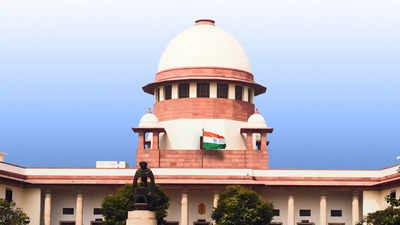
New Delhi: In a landmark judgment on Friday, the Supreme Court overruled the 1967 judgment. Aligarh Muslim University (AMU) minority status, citing its designation as a Central University. The court directed the case documents to be submitted to the Chief Justice, who will set up a new bench to examine the validity of the 2006 Allahabad High Court verdict on AMU’s minority status.
A five-judge constitution bench of the Supreme Court in S. Aziz Basha v. Union of India in 1967 held that AMU was not a minority institution and did not qualify for special rights as a central university. under Section 30. The latest verdict by a seven-judge bench headed by Chief Justice DY Chandrachud overturned this stand with a 4:3 majority.
Split verdict
The bench, which gave four separate judgments in the case, said that AMU’s status as a minority institution should be determined based on the criteria laid down by the court. Chief Justice Chandrachud, who wrote the majority opinion, along with Justices Sanjiv Khanna, JB Pardiwala and Manoj Mishra held that AMU’s minority status should be reassessed under the special tests laid down by the court. The majority also observed that despite its status as a central university, AMU’s legal and historical identity as a Muslim institution cannot be ignored.
However, the decision could not be unanimous. Justices Suryakant, Dipankar Dutt and Satish Chandra Sharma wrote separate judgments arguing that AMU’s classification as a central university and its government funding should preclude the claim of minority status.
Historical context of AMU’s legal status
The question of AMU’s minority status is a long-running legal battle. Founded in 1875 by Sir Syed Ahmad Khan as the Muhammadan Anglo-Oriental College, it was granted university status in 1920 during the British rule. The AMU Act of 1920 initially defined the institution as a Muslim university, but significant amendments to the Act over the years have changed its legal status.
A major turning point came in 1951, when an amendment to the AMU Act removed the requirement of religious education for Muslim students. This change sparked a debate over whether the university retained its character as a minority institution.
In 2006, the Allahabad High Court struck down the provision AMU Minority StatusAnd the case has since moved through several judicial forums. In 2019, the Supreme Court referred the case to a larger bench, and the final verdict was delivered this week.
1981 amendment and ongoing controversy
One of the key issues highlighted by the court in its judgment was the 1981 amendment to the AMU Act, which, according to Chief Justice Chandrachud, failed to restore the original minority character of AMU as it stood before the 1951 amendment. This has been a contentious point in the ongoing legal battle.
Justice Chandrachud noted that the 1981 amendment did not fully reflect the historical and constitutional framework in which AMU was established. “One thing that worries us is that the 1981 amendment does not restore the pre-1951 situation,” he remarked during a hearing in February 2024.
Political Implications and Future Challenges
The decision has significant political implications, with strong reactions expected from various quarters. The verdict comes after years of legal battles with the Bharatiya Janata Party (BJP)-led NDA government arguing that AMU’s status as a central university and its government funding make it ineligible for minority rights. 1967 s. Reinforced by Aziz Basha’s decision, which has now been overturned by the current majority rule.
On the other hand, the opposition-led United Progressive Alliance (UPA) has consistently argued that AMU’s fundamental character as a Muslim institution under the 1920 Act should qualify it for minority status, regardless of its central university status or government funding.
Senior advocate Kapil Sibal, who represented the university in the case, argued that under Article 30 of the Constitution, AMU has the right to self-govern as a minority institution, be it its governance structure or its source of funding.
Case for reconsideration
The Supreme Court has now referred the case to a regular bench pending final resolution of AMU’s minority status. Legal experts suggest that could mean more hearings and a possible reexamination of the ruling’s broader implications for other organizations with similar claims.
With the court divided on the issue, and now set to reconsider the case, the future of AMU’s minority status is uncertain, but Friday’s decision marks a turning point in the ongoing debate on the rights of minority educational institutions in India.